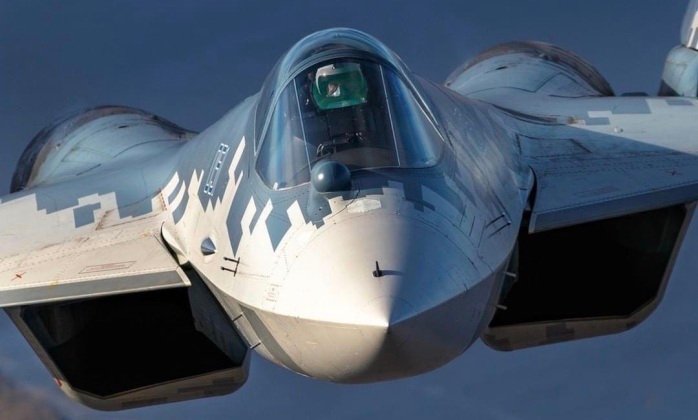<p >The Russian state aviation giant the United Aircraft Corporation (UAC) has commented on the possibility of exporting Su-57 fifth generation fighters, following the aircraft’s appearance at the China Airshow 2024 in Zhuhai. Over 30 Su-57s are currently thought to be in service in the Russian Air Force, with deliveries for 2024 scheduled to reach 22 aircraft – up from <a href=" >12 the previous year</a>. "The UAC is constantly increasing Su-57 production volumes and the Corporation is ready to offer this aircraft to its foreign partners. The presence of a fifth-generation fighter in Russia is an indicator of technological sovereignty and the high level of science and technology of the country. It is symbolic that exactly 10 years ago, the Su-35 was shown at this same exhibition [Airshow China in Zhuhai]. Since then, the aircraft has found its customers in many countries around the world," the corporation’s press office stated. "The Corporation's stand will also be dedicated to the Su-57. Visitors will be able to ‘fly’ an interactive Su-57E simulator using virtual reality technologies," it added at the time.</p><p ><img src=" title="Su-57 Prototype at Zhuhai 2024"></p><p >The airshow at Zhuhai marks the Su-57’s first ever appearance at a public event outside Russia, although the fighter has gained negative press in the Western world after close up images of the aircraft in China highlighted their poor production quality and very limited stealth capabilities. Nevertheless, the quality of the two fighters at the air show are <a href=" target="_blank">far from representative</a> of those of active service Su-57s, since both are individually built prototypes produced for testing purposes rather than actual combat. Serial production aircraft seen from late 2020 have been produced to a far higher standard.</p><p >The<a href=" Aviation Plant</a>&nbsp;in the Russian Far East in August saw&nbsp;<a href=" facilities opened</a>&nbsp;specifically to facilitate expanded Su-57 production, with a number of unconfirmed reports indicating that Algeria has already placed orders. India has also continued to show a strong interest in the fighter, and is reportedly considering either off the shelf acquisitions or a license production deal. Export prospects are expected to be improved by the Su-57’s extensive deployments for a wide range of combat operations in the Ukrainian theatre, which have included&nbsp;<a href=" >air defence suppression</a>,&nbsp;<a href=" >air to air combat</a>, and<a href=" target="_blank"> operations in</a>&nbsp;heavily defended enemy airspace.&nbsp;&nbsp;</p><p ><img src=" title="Chinese J-35 at Zhuhai 2024"></p><p >The Su-57’s export prospects nevertheless remain in question due primarily to competition from the <a href=" target="_blank">Chinese J-35</a> – a derivative of its FC-31 developed specifically for export. China’s fighter aviation industry is not only much larger, but also far more advanced than that of Russia, with the J-35 offering vast superiority in its avionics and stealth capabilities to the Su-57. While Western criticisms of the Su-57 have frequently strongly exaggerated its shortcomings, the fighter may well face less favourable export prospects than its direct predecessors the Su-27 and Su-30 which had far higher international standings in their time. While Russian sources previously frequently commented on the possibility of Su-57 exports to China in the 2010s, this has effectively disappeared from prevailing discourse as China’s <a href=" target="_blank">top fifth generation fighter the J-20</a> has demonstrated superiority over its Russian rival by a growing margin. With China having been by far the largest client for the Su-27, the second largest for the Su-30, and the only client for the Su-35, the loss of the Chinese market represents a significant blow to the Russian fighter aviation industry, and is likely to be followed by similar losses to Chinese competition on international markets.</p>
Russian Aviation Giant Comments on Su-57 Fighter’s Export Prospects: Are They Realistic?

